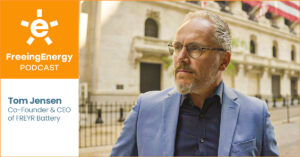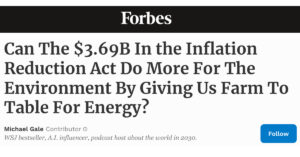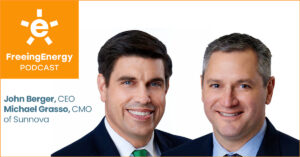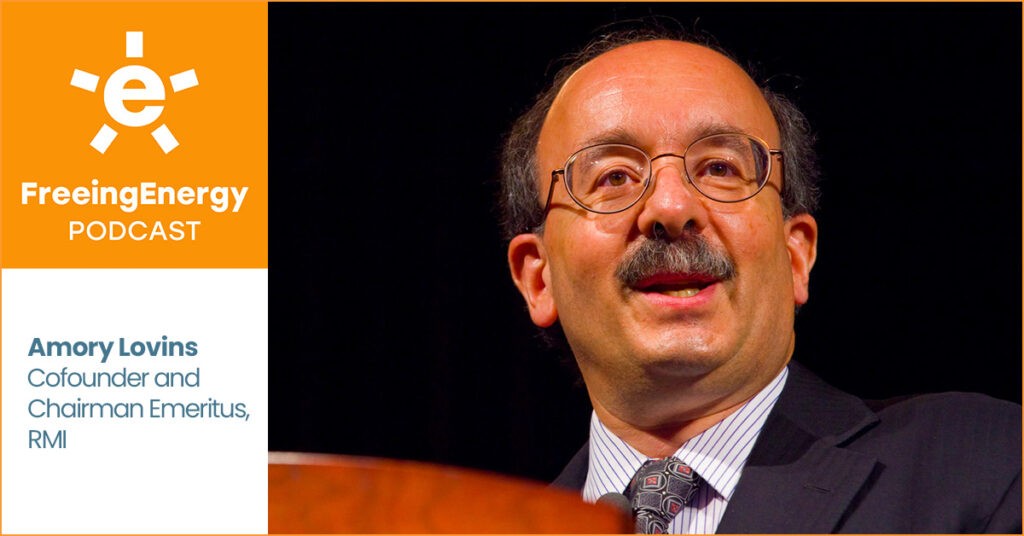
Host Bill Nussey catches up with prolific author, professor, energy expert, co-founder of the global powerhouse, RMI, and “the Einstein of Energy Efficiency”, Amory Lovins. Lovins takes us back to the future, sharing what inspired the seminal work, Small is Profitable, and what surprises him most as he looks at the changes that have taken place since its publication twenty years ago. Lovins offers powerful insights on why local energy makes even more sense today in social, political, and economic terms and what has to change to continue the progress made thus far.
Amory is a co-founder and chairman emeritus of RMI (previously called the Rocky Mountain Institute). He has 12 honorary doctorates, a MacArthur Genius Award, an Ashoka fellowship. He also wrote, or was on the main author of 750 papers and 31 books including five foundational works, Soft Energy Paths, Natural Capitalism, Brittle Power, Reinventing Fire, and the book discussed today on its 20th anniversary, Small Is Profitable. (This book is made available for free download. See the link below.)
Amory Lovins is renowned for his insights and quotable points. This discussion is full of these. Here are some of the highlights…
“…the pace of the transition is set not by incumbents, but by the insurgents. They are not inhibited by the incumbent legacy assets or cultures or mindsets.”
“…we have a very diverse society. People want many different things, and I found it works best to honor others beliefs as you would your own, even if you disagree with them, and to focus on outcomes, not motives. You don’t all have to agree about why you want local choice or renewable power, or resilience or competition in free markets or efficient use. If you want to do the same thing for different reasons, that’s fine. Respect the reasons, collaborate where you can on the outcomes, so that we really enlist everybody in our diverse society in doing what the nation and the world need.”
Amory’s answer when asked, “What words of advice or inspiration can you offer our listeners?”
“…I think we need cultural change in in these professions and businesses more than we need technical change. We will get much better technologies and designs which are at least as important, but they won’t be deployed if the old mindsets don’t retire, and [those mindsets] evolve a lot more slowly than the technologies.”
Amory Lovins & the Freeing Energy book
Per Bill Nussey:
I first became aware of Amory’s vision and his work at a TED talk he gave in 2005. As I sat in the audience, his ideas transfixed and inspired me. This was perhaps my earliest first step into what would ultimately become the focus my life’s work.
Fast forward many years and I found myself sitting in Amory’s office at the headquarters of his firm, Rocky Mountain Institute. He was the very first person I interviewed in what would become a website, a podcast, and ultimately, a book called Freeing Energy. I was honored that he would invest time to help me think through the early thesis I had developed for the book.
As our conversation began, Amory said that many people from the computer industry struggle as they transition into clean energy because they have no experience with the asset and regulatory intensity of this industry. He applauded my efforts to write a book and learn the industry before I jumped into building businesses. This, more than anything else, cemented my confidence and resolve to push forward with, what would turn out to be, the largest project of my life.
Both Amory and RMI are quoted and referenced throughout my book. But even more important, their ideas and their vision are really at the heart of the book and my own story writing it.
With the book complete and out in the market, my discussion with Amory this month is an ideal symmetry to this amazing journey that I and so many of my colleagues in Freeing Energy have been on.
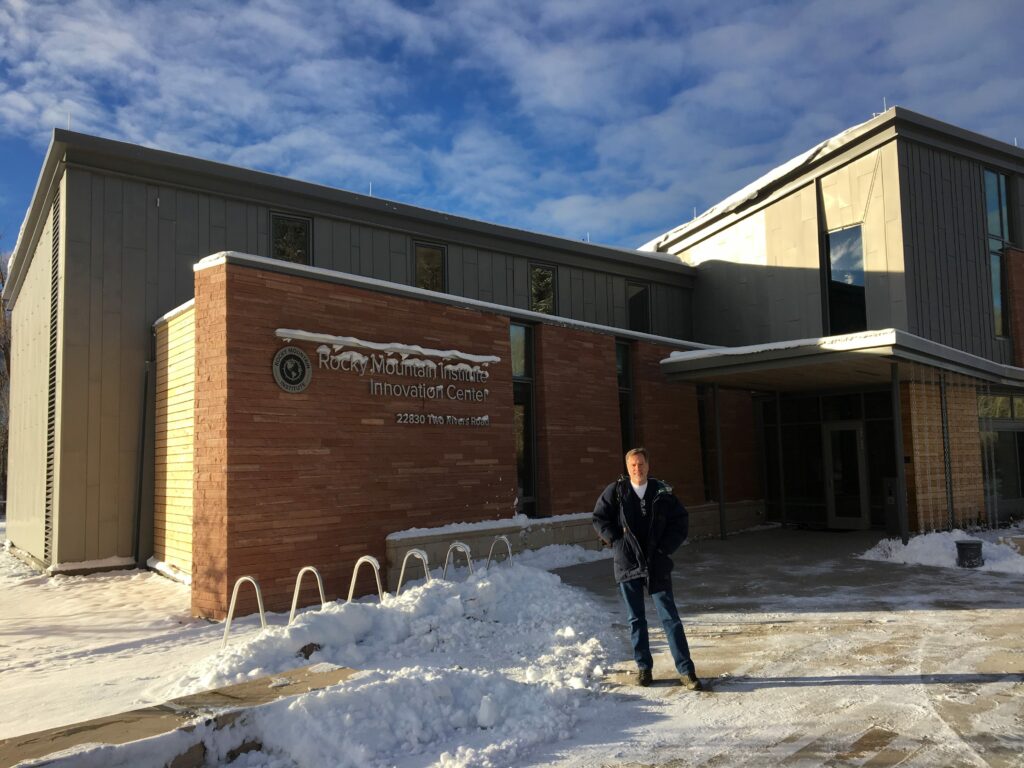
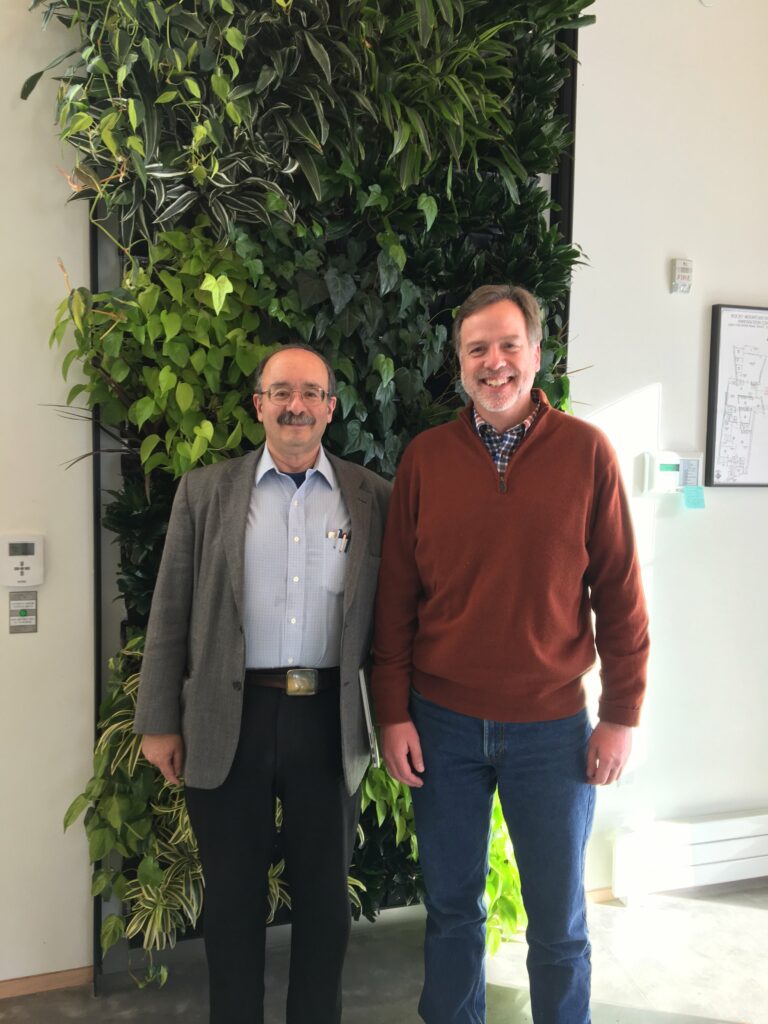
If there was any single person that influenced and inspired my journey these last few years, it would have to be Amory Lovins. I am thrilled to share our discussion. You can listen to it here or any of your favorite podcast platforms.


To learn more about the book check out our website. Freeing Energy is also available for order on Amazon!
Check out these links to learn more
Rocky Mountain Institute (RMI)
Full Transcript
Bill Nussey:
Well, hello and welcome. Welcome. Welcome to everybody in the Freeing Energy listening world. This is Bill Nussey, your host and founder of Freeing Energy. Boy, this is going to be a pretty cool discussion today. As you know, our mission from the very beginning has been to talk about how the world can transition to clean energy faster, particularly through the path of small local scale systems we call local energy. And if there is any single person that has influenced my own personal journey to this, it is today’s guest, Amory Lovins.
So just a quick introduction on Amory in case you haven’t him, which is kind of hard to imagine, but just… Amory’s a co-founder and chairman emeritus of RMI, which used to be called the Rocky Mountain Institute. I first saw him in 2005. He gave a Ted Talk called Winning the Oil End Game. And I sat there in the audience and I was like, wow, because everything he said made so much sense to me, more sense than most things make. And he said it with his wit and provocative style that really captured me. And I became a fan and followed him for a really long time. It was one of the most powerful visions of change that I had ever heard.
And even though a lot of people will who listen, will know about him. I think it’s just worth a moment to share his credentials. Just a few, right? So 12 honorary doctorates, a MacArthur Award, an Ashoka fellowship. He also wrote, or was on the main author of 750 papers and 31 books including five foundational works, Soft Energy Paths, Natural Capitalism, Brittle Power, Reinventing Fire, and the one where you’re here to discuss on its 20th anniversary, Small Is Profitable. So Amory, welcome to the podcast.
Amory Lovins:
Well, thank you. It’s great to have a 20th anniversary.
Bill Nussey:
You were one of the first people to show that the economics of efficiency and renewable energy to provide what you called the soft path, which is a lower cost and reduced environmental impact. And you’ve had a sort of, “we can use business to do this” approach from the beginning. And for me personally, you sat down with me five years ago at your headquarters in Basalt, Colorado, just outside of Aspen for those people that don’t know the area. And you were literally the first person I interviewed out of what became almost 400 in the subsequent five years. It really set the tone of what became this giant project that’s now 80 plus podcasts, hundreds of articles that’s in the book, which is done better than I had hoped. I am just thrilled to jump in and talk about Small Is Profitable and the vision of what I call local energy. But before we jump into that, what are you thinking about in the midterm for your goals?
Amory Lovins:
Well, I’d like to make integrative design the standard practice, not a rarity and therefore test and scale as many as I can make work of about 20 scaling vectors that will make it big, fast. Already efficient use of energy, especially electricity, is a massive source of decarbonization, not at a cost, but at a profit. And that makes the renewable task of displacing the rest of the fossil fuels very much easier, because you need less of it to do the job and you can therefore scale up to a larger share, much faster. A lot of people still don’t understand, even people who should know better, how the grid works-
Bill Nussey:
Really?
Amory Lovins:
..and the profound changes really that the grid is undergoing as it becomes, as a Canadian colleague said, decarbonized, decentralized, digital, and democratized, or as the Midwest Power Pools chief technical guy said, “We’re switching from forecasting demand and scheduling supply to scheduling demand and forecasting supply.”
Bill Nussey:
That’s awesome. I love… And you left out one of my favorite D’s. The business guy in me loves the last D. I always make people think about, which is disruptive.
Amory Lovins:
Very much so. And already trillions of dollars have prudently left the fossil fuel industries and are often going into efficiency, renewables electrification. That’s exactly what ought to be happening. And it means that the pace of the transition, the transformation really, is said not by incumbents, but by insurgents, because they’re not inhibited by the incumbents’ legacy assets or cultures or mindsets.
Bill Nussey:
Well, let’s talk about this book you wrote. 20 years ago, you and your co-authors published this seminal book called Small Is Profitable: The Hidden Economic Benefits of Making Electrical Resources the Right Size. In a nutshell, because we’re going to talk a lot about it, but in a nutshell, what is that book about?
Amory Lovins:
The Small Is Profitable examines and documents 207 so called distributed benefits that make the right sizing of electrical systems, the right size for the job typically make them about an order of magnitude factor 10 or so more valuable. That’s not counting any social or environmental advantages. It’s basically a mashup of financial economics and electrical engineering. So it looks at improving system planning, utility construction, and operation, especially of the grid and the service quality. Now obviously the actual value of making an electrical resource the right size is very site specific, but it’s generally large enough to tip just about any investment decision that utilities or other electric players make.
Amory Lovins:
And by the way, although the book is about electrical resources, it focuses only on the supply side, but essentially the same advantages apply to energy efficiency competing with supply. We showed for EPA. It also applies about 2/3 to water and wastewaters systems, and it probably applies to a lot of other things. So it should be equally applied. When we’re building just about anything we should ask, “What’s the right size for the job?” And that’s a question that hadn’t been asked much in the energy sphere when I wrote that ’76 Foreign Affairs paper, because at that time, the notion that small but mass produced energy technologies might be useful, worthwhile, competitive was generally dismissed as romantic quaint and even crazy.
Amory Lovins:
So it actually took us, all seven of us, over the years a total of 27 years to assemble and organize the strong contrary evidence into a coherent techno economic book. I think Small Is Profitable is still the definitive study of scale that probably remained so for quite a while because it was so darn much work to put it together. Of course, there’s a lot of very strong new evidence in the 20 years since then, but it was already pretty convincing back then.
Bill Nussey:
Well, a lot of people don’t know that if they’ve heard of that book, and many have, but even fewer know that it’s actually dedicated to E.F. Schumacher and that title is a nod to his 1973 groundbreaking book, Small is Beautiful: A Study of Economics As If People Mattered. Some of the folks who listen in on this are younger and may not have been exposed to what an absolutely groundbreaking book Schumacher created. What is it about his work that you read that made you think, “Boy, this could apply to electricity”?
Amory Lovins:
Well, that is a classic book, but I actually knew Fritz because as it turns out, his office of his Intermediate Technology Development Group was right next to the Friends of the Earth UK office at 9 Poland Street in Soho in London, so I would occasionally run into him. He certainly asked what’s the right size.
Amory Lovins:
If you look back from 30,000 feet at the century of strong economies of scale that grew our billion watt power plants today, it really did make sense to do that in the early 20th century, because at that point, power plants were costlier and less reliable than the grid. So we had to combine them via the grid to keep supply to the customers reliable and economical. And the grid also shared the costly generating capacity across all customers diverse loads. And often it also made big and urban customers subsidized electrification for small and rural customers. But then the economies of scale ran out of steam literally, that as the central thermal [inaudible 00:10:51] stopped getting more efficient in the 1960s, they stopped getting bigger in the ’70s, cheaper in the ’80s, bought in the ’90s, renewed in the aughties, economically operable in the teens and now considered necessary in the ’20s. So now they’re being rapidly retired as impressive, venerable white elephants that served us well until they became obsolete.
Amory Lovins:
But meanwhile, a powerful new structural logic was emerging in the electricity business. Because by the start of the 21st century, the industry’s bedrock assumptions had quietly reversed. At first, we had railcar deliverable and combined cycle gas power plants that cost less per kilowatt than the grid that delivered their power. Remember that’s the opposite of where we started, where the power plants were costlier than [inaudible 00:11:47]. And the generation got so reliable that 98 or 99% of the power failures originated in the grid, hauling electrons in the US an average 400 or 500 kilometers. So the grid spreading out the concentrated power from central stations to distributed customers had became the main cause of retail power costs and interruptions. Just the opposite of where we’d been a century earlier. And then meanwhile, in 2020 in the US, 2014 in Japan, rooftop solar power officially became cheaper on average than grid power per delivered kilowatt hour. And therefore, now the cheapest, most reliable power can be produced renewably and produced at/or near the customers that is distributed. So that’s the big context for then digging into what is the right size for the job.
Bill Nussey:
And that vision was what spurred the entire book and podcast that we work on, Freeing Energy. And the notion is that the idea that you shared is spot on. Most people, even today are either unaware of it, don’t believe it or are fighting it. And that’s the name Freeing, because the en energy on your house, in your building, in your neighborhood is the cheapest, most reliable form of energy, but it’s trapped by a policy and business model invented for an entirely different world 100 years ago. And that’s what gets me excited about this potential, why I think it’s disruptive, because the technology’s there, the costs are there, the reliability’s there, we just got to get the word out and we have a huge opportunity to accelerate the clean energy transition.
Speaker 1:
This may be the 20th anniversary for the publication of Small Is Profitable, but this year marks another important milestone too. Our guest today, Amory Lovins, co-founded the nonprofit organization, RMI, 40 years ago in 1982. RMI is an outgrowth of Lovins early thinking around the choice to take a soft path toward a more decentralized, more democratic and more digitized electric energy future based on renewable energy resources and energy efficient strategies.
Speaker 1:
One of the principles at the core of Lovins’ work is that we no longer need to rely on the outdated and inefficient use of big, crude, centralized, fuel burning power generation sources, noting that it’s like cutting butter with a chainsaw. With a clarity of insight and command of facts, Lovins has overseen the growth of RMI into one of the most respected institutions on earth. RMI now has office is around the world and expansive programs focused on how we produce and use energy. Through its programs and teams, RMI touches on an impressively sweeping array of critically important topics, including carbon-free buildings, electricity generation, mobility, advanced technologies, and manufacturing. RMI’s reach into and impacts on governments, corporations, and communities around the world is reinventing our energy future as we collectively strive toward its vision of a world thriving, burdened, and secure for all forever.
Speaker 1:
We encourage each of our listeners to spend time learning more about RMI, its people, and programs, and the incredible work the firm and its people are doing. We’ve included a link to RMI in the webpage for this episode. To download a free copy of Small Is Profitable, just jump over to this podcast’s webpage on freeing energy.com and check out the links we’ve shared with you.
Speaker 1:
Now, back to Amory and Bill to hear more about why Small Is Profitable is even more relevant today and where we are headed.
Bill Nussey:
Well, let’s swing back to the book. I’m really interested. So when you wrote the Small Is Profitable, you and your colleagues 20 years ago, you had a perspective on where the market might go. This is a hard question to ask, but I’m curious. When you pushed this book out 20 years ago, what surprises you the most about where we are to day? Are the technologies further ahead or farther behind? What about the state and federal policies? Where did you think the world would be if you thought about it?
Amory Lovins:
Well, the technologies are way ahead of where we thought. And in fact, 11 years ago in, excuse me, a book called Reinventing Fire kind of grand synthesis, 61 colleagues and I showed how the US by 2050 could be running a 2.6 fold bigger economy with no oil, no coal, no nuclear, a lot less gas, could now be no gas if you want, and a very resilient half distributed grid. And it would all be about $5 trillion cheaper than the [inaudible 00:16:55] plants assuming that protecting climate health and security is worth nothing. And by the way, it’s tracking quite nicely to market. We were deliberately conservative about how quickly renewables would grow and how cheap they’d get. So it’s going even a bit better than we expected.
Amory Lovins:
Another benchmark of Bloomberg New Energy Finance which tracks over 20,000 real clean energy projects all over the world, recently forecast at the median size of European power plants will fall by a factor of 20 between 2020 and 2050 from about 600 megawatts now to 120 megawatts by 2035, to 30 megawatts by 2050. And also you’ll like this one, that Europe’s fraction of generation that is directly injected into the distribution grid bypassing transmission. In other words, it’s local power will rise from 24% to 67%.
Bill Nussey:
Wow.
Amory Lovins:
In other words, small is not just theoretically profitable, it’s taking over the market. And that means that grid has to evolve from a unidirectional tree spreading out billion watt blocks of power to distributed users into an omnidirectional web that gracefully handles power flow every which way, and has a lot of distributed intelligence to run itself, even devices to run themselves without a dispatcher far off having to sit in a control room somewhere telling all the electrons where to go.
Bill Nussey:
I talked to and I interviewed quite a few people who operate or oversee the traditional one-way grid. And there’s a huge amount of skepticism that it can be turned into what you say, Amory. And the typical answer is, “Well, we just need to build this hypothetical smart grid that will solve all the problems. It’s a black box. It’ll solve the problems.” But we just have to agree on all these standards and it doesn’t make any great progress. But I spent a lot of my career in the computer industry. I’m old enough to have seen the transition from large centralized computing to massively distributed computing. Even the clouds in Google are made up of millions of small computers. But I’m also an electrical engineer and I know that the metaphors by no means perfect and exact. But it does give me great hope that as engineers and scientists and inventors work on this, we can make that transition, even though a lot of the folks in it today don’t see that as a possibility. I’m optimistic and confident we can.
Amory Lovins:
Yeah. I think part of that’s a generational change. If you had asked the Danish grid operators 15 years ago, could you imagine running on 79% renewables as they did in 2019 all ear? And they’re often over 100%. They’ll probably be oh, 86 or something last year, we don’t have the data yet. They would’ve said “No, that’s absolutely impossible. The lights will go out.” But they gradually learned by doing and gained confidence. And now the ultra reliable former east German utility FIPS and KEMPS was 62% renewably powered last year, mostly sun and wind. And they’re targeting 100% renewables all reliably integrated 10 years from now. If you look elsewhere around Europe, the latest annual figures published are Scotland’s 97% of demand met by renewables. Germany, 52%. Portugal, 66. Spain, 46. And then Germany, Britain, Ireland are about half. In other words, well ahead of the US.
As my colleague Clay Stranger puts it, these grid operators have learned to run their systems the way a conductor leads the symphony orchestra. No instrument plays all the time, but the ensemble continuously makes beautiful music. And therefore you look at, say the 2020 German data, the maximum percentage of German electric demand met by portable tanks and wind power, the variable renewables, reached over half at some time, almost every week that year. In about half the weeks, it reached somewhere between 80 and nearly 100%. The nuclear phase out and the coal phase out continued, and the lights stayed on. What could I say? They’re German engineers. They’re very good over ours.
Bill Nussey:
Wow. Well, let’s look forward. As we wrap up our conversation today, let’s look forward for 20 years. What do you think that the largest impediments to a vision you cast 20 years ago, which is still largely non-mainstream? What do you think we can do or should be done to help make it accelerate towards broad awareness and change?
Amory Lovins:
It’s I think we need call cultural change in these professions and businesses more than we need technical change. We will get much better technologies and designs, which are at least as important, but they won’t be deployed if the old mindsets don’t retire and they evolve a lot more slowly than the technologies. For example, many utilities still require you to hook up your rooftop solar so it won’t work without grid power. Why would you do that? My house does the opposite. Now there’s a national standard that keeps the line work safe, but lets your house work even if the grid goes down. I’ve done that for over 25 years and I had one power failure, or I would have if the grid had gone down at the same time. That is my onsite power failed once when a battery cell failed. And then I’ll get a more reliable one that won’t.
Amory Lovins:
But if you look at the recovery after major storms, the biggest holdup that delays everything by a week or two is when the gas stations can’t pump fuel anymore because they only work on grid power. They ought to run on solar and batteries for that pump. The convenience store can go down, but I want the pump to work. There’s no reason to make our fuel supply for first responders and gen sets depend on grid power. That’s just stupid. Let’s design it out. And this takes a cultural change and a commitment that in the name of national security, we’re actually just going to go do it. It is the strategy the Pentagon follows for resilient power on its basis. Well, I’d like all of our citizens whom they defend to have the same access to resilient power.
Bill Nussey:
So can you offer any words of advice, inspiration, or vision to the folks who are so excited about this vision that you cast 20 years ago and a few of us have caught onto more recently? What would you like to say to all of them?
Amory Lovins:
First, we have a very diverse society, people want many different things. And I found it works best to honor others’ beliefs as you would your own even if you disagree with them. And to focus on outcomes, not motives. You don’t all have to agree about why you want local choice or renewable power or resilience or competition and free markets or efficient use. If you want to do the same thing for different reasons, that’s fine. Respect the reasons, collaborate where you can on the outcomes so that we really enlist everybody in our diverse society in doing what the nation and the world need.
Bill Nussey:
Thank you. Thank you. Well, as we wrap up this podcast, Amory, one of our traditions is to ask all of our honored guests the same four questions, and the answers are as fascinating as they are diverse. And so I hope you will help us wrap it up with some quick answers. We called it the lightning round. What excites you most about being in the clean energy business?
Amory Lovins:
I’m most excited about the clean energy business because it’s rapidly taking over the world that can solve many of our problems without making new ones.
Bill Nussey:
If you could wave a magic wand and change just a single thing, what would it be?
Amory Lovins:
I would desubsidize the entire energy system and let all technologies compete at honest prices, regardless of their type, technology, size, location, or ownership.
Bill Nussey:
What do you think will be the single most important change in how we generate store and distribute electricity in the next five years?
Amory Lovins:
I think the most important change will be realizing we don’t need nearly as much electricity as we thought we did before we started competing or comparing efficient use with more supply or more storage.
Bill Nussey:
And the last question one, which I suspect you have been asked more than any living human being. What can I do to make a difference as we try to address climate change and transition to clean energy?
Amory Lovins:
Learn what’s possible from what is actually happening. Talk to your friends and neighbors about it and reflect it in what you buy, how you vote, and how you shape the evolution of the new energy world that’s coming up all around us. The fish doesn’t know it’s in the water. But we are all in the midst of probably the greatest human transformation since agriculture, and whatever choices we make will help or hurt that transition from happening smoothly and justly.
Bill Nussey:
Well, to all of our listeners and friends, I think this is one of the most inspiring and thoughtful discussions we’ve ever had the privilege to share with you. So Amory, I am so grateful for your time. I know how busy you are and you have been an inspiration and a touch point for me along this whole journey and therefore through all the folks that have fallen into the Freeing Energy universe. So thank you so much for your time today and all of your wisdom and all of your leadership.
Amory Lovins:
You’re most welcome. Implementation is left as an exercise is for the viewer.
Bill Nussey:
Thank you. All right.


